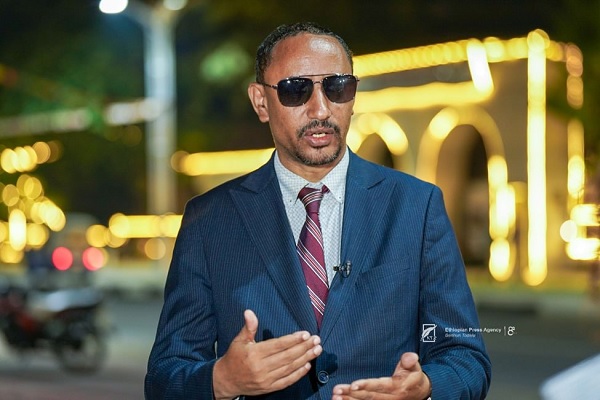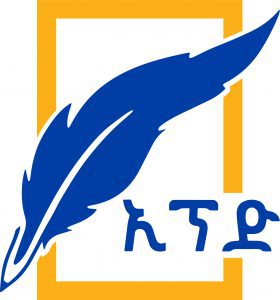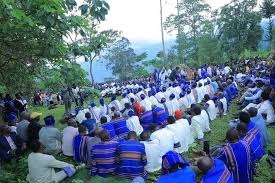
As a country of diverse nations and heterogeneity, there is a multiplicity of cultures. Though content and essentiality have long been there, culture and cultural diplomacy have not flourished in Africa.
Ethiopia is a region rich in cultural diversity, home to numerous ethnic groups, each with its unique traditions, languages, and ways of life. This cultural mosaic plays a vital role in shaping the identity of the region and contributes significantly to Ethiopia’s national heritage. The significance of these cultures in South Ethiopia extends beyond mere customs; they influence social dynamics, economic activities, and community cohesion.
South Ethiopia is inhabited by various ethnic groups, including the Sidama, Hadiya, Wolayita, and Gurage, among others. Each group brings its language, art forms, music, and culinary traditions, creating a vibrant tapestry of cultural expressions. This diversity is a source of pride for the communities and contributes to the richness of the Ethiopian identity.
Language is a fundamental aspect of culture, and in South Ethiopia, multiple languages coexist. The Sidamo, Hadiyisa, and Wolayttatto languages, among others, are spoken widely. These languages facilitate communication and encapsulate respective communities’ history, values, and worldviews. Promoting and preserving these languages are crucial for maintaining cultural heritage and fostering a sense of belonging.
The various ethnic groups in South Ethiopia celebrate a range of rituals and traditions that reflect their beliefs and values. Festivals, ceremonies, and rites of passage are integral to community life, marking important life events such as births, marriages, and harvests. For instance, the Sidama New Year, or Fiche Chamballaala, is a time for reflection and renewal, while the Hadiya celebrate their unique festivals that reinforce community ties and cultural identity.
Artistic expressions in South Ethiopia are diverse and vibrant. Traditional crafts, such as weaving, pottery, and carving showcase the skills and creativity of local artisans. Music and dance are also central to cultural celebrations, with each ethnic group having its distinct styles and instruments. These arts forms and serve as entertainment but also convey stories, histories, and social values.
The cultural practices in South Ethiopia have economic significance as well. Traditional agriculture, crafts, and tourism are closely linked to cultural identity. For instance, cultural festivals attract visitors by promoting local businesses and generating income for communities. The agricultural practices rooted in cultural traditions ensure food security and sustainability, highlighting the interconnection between culture and economic well-being.
Cultural diversity fosters social cohesion within communities. Shared traditions and values create a sense of belonging and identity among individuals. In South Ethiopia, cultural celebrations often bring together different ethnic groups, promoting understanding and cooperation. This unity is essential for peacebuilding and conflict resolution, particularly in a region where ethnic tensions can arise.
As modernization and globalization continue to impact traditional ways of life, the preservation of cultural heritage in South Ethiopia becomes increasingly important. Initiatives aimed at documenting and revitalizing cultural practices help ensure that future generations remain connected to their roots. Community-led efforts to promote cultural education and awareness are vital for sustaining this rich heritage.
The cultures of South Ethiopia are significant not only for their diversity but also for their contributions to the social, economic, and communal fabric of the region. They embody the history, values, and identities of various ethnic groups, enriching Ethiopia’s national narrative. As the world becomes more interconnected, recognizing and celebrating this cultural diversity is essential for fostering understanding, unity, and resilience among communities in South Ethiopia and beyond.
Fiche Chamballaala is an essential cultural event celebrated by the Sidama people in Ethiopia. This festival, rooted in the agricultural calendar, marks the end of the harvest season and is a time for community, reflection, and celebration. The significance of Fiche Chamballaala extends beyond mere festivities; it embodies the Sidama’s rich cultural heritage and reinforces social bonds within the community.
The Sidama people, one of the prominent ethnic groups in Ethiopia, have a deep connection to their land and traditions. The Fiche Chamballaala festival has been celebrated for generations, symbolizing gratitude for the harvest and the blessings of the land. Traditionally, this event is held in the month of Genna (around mid-January), aligning with the agricultural cycle when crops are harvested.
Fiche Chamballaala serves as a platform for unity among the Sidama people. Families and friends come together to celebrate their shared heritage. The festival fosters a sense of belonging and strengthens social ties, as community members engage in various activities, including traditional dances, music, and storytelling.
The festival is rich in rituals that reflect the Sidama’s cultural identity. One of the most notable practices is the preparation of special dishes, particularly the traditional drink called “Bunna” (coffee), which plays a central role in Sidama culture. The act of sharing coffee during the festival symbolizes hospitality and friendship.
Additionally, traditional dances and songs are performed, showcasing the vibrant artistic expressions of the Sidama people. These performances are not only entertaining but also serve to pass down stories and values from one generation to the next.
Fiche Chamballaala has considerable economic implications for the Sidama region. The festival attracts visitors from surrounding areas, boosting local businesses, such as food vendors and artisans. This influx of visitors enhances the region’s economic vitality, providing opportunities for small-scale entrepreneurs.
The festival also plays a crucial role in promoting the Sidama identity nationally and internationally. As the Sidama region gained official state status in Ethiopia in 2020, Fiche Chamballaala has become a symbol of pride for the Sidama people. It highlights their unique culture and traditions, fostering a sense of recognition and respect within the broader Ethiopian context.
Fiche Chamballaala is more than just a festival; it epitomizes the Sidama people’s heritage, unity, and resilience. As they come together to give thanks for the harvest, the Sidama reinforce their cultural identity and strengthen social bonds. This festival not only enriches the local community but also serves as a beacon of Sidama pride in the ever-evolving tapestry of Ethiopian culture. Through Fiche Chamballaala, the Sidama people continue to honor their past while embracing the future.
Fiche Chamballaala, also known as the Sidama New Year, is a significant cultural celebration in Ethiopia, particularly among the Sidama people. This event marks the beginning of the New Year in the Sidama calendar and is celebrated with vibrant festivities, traditional rituals, and communal gatherings. The importance of Fiche Chamballaala extends beyond mere festivities; it plays a crucial role in preserving cultural identity, fostering community ties, and promoting agricultural cycles.
Fiche Chamballaala typically falls on the 1st of Meskerem in the Ethiopian calendar, which corresponds to late September in the Gregorian calendar. The celebration symbolizes renewal and hope, as communities come together to reflect on the past year while looking forward to the opportunities the New Year may bring. It embodies the spirit of resilience and gratitude, as families honor their ancestors and give thanks for the blessings received.
The celebration of Fiche Chamballaala is deeply rooted in the Sidama culture. It includes various traditional rituals, such as the preparation of special meals, the wearing of traditional attire, and the performance of songs and dances that convey the community’s history and values. These practices strengthen cultural identity and ensure the younger generation remains connected to their heritage.
The timing of Fiche Chamballaala aligns with the agricultural calendar, making it particularly significant for farming communities. The Sidama people traditionally rely on agriculture for their livelihood, and the New Year marks the end of the harvest season. Celebrating Fiche Chamballaala allows communities to acknowledge the agricultural cycles, honor the hard work of farmers, and pray for a fruitful year ahead.
Fiche Chamballaala is also a time for community bonding. Families and friends gather to celebrate, share meals, and engage in cultural activities. This communal spirit fosters a sense of unity and belonging among participants. It is an opportunity for the Sidama people to come together, reinforcing social ties and promoting cooperation within the community.
The celebration serves as a platform for intergenerational dialogue, where elders pass down stories, traditions, and wisdom to younger generations. This exchange is vital for preserving cultural knowledge
Mekuria Mershaye, Hawasa City Mayor, said that Fiche Chamballaala promotes coexistence, peace, unity and depicts history for posterity, recalling that it has been ten years since it was inscribed by UNESCO as cultural heritage of the world. The significance of Fiche Chamballaala lies in its ability to connect individuals, strengthen communities, and preserve the rich tapestry of Ethiopian culture for generations to come.
As to the Mayor there has been readiness to peacefully celebrate such a grand event by organizing pre-celebration campaigns. Explaining that Hawassa is the hub of peace, he further said that there is a system called Afiny to resolve conflicts among the Sidama people. He insisted that the system laid the foundation for peaceful coexistence and harmonious culture in the region. Hence the city has become the preferred tourism destination in the country, ensuring that the values and practices.
In contemporary Ethiopia, Fiche Chamballaala has gained prominence beyond the Sidama region, attracting attention from various communities and international audiences. The celebration promotes cultural tourism and highlights the diversity of Ethiopia’s rich heritage. By showcasing the festivities, Ethiopian culture is further recognized and appreciated globally.
Fiche Chamballaala is more than a New Year celebration; it is a profound expression of cultural identity, agricultural awareness, and community unity. As the Sidama people come together to celebrate this occasion, they honor their past and inspire hope for the future.
BY LAKACHEW ATINAFU
THE ETHIOPIAN HERALD SATURDAY 29 MARCH 2025





